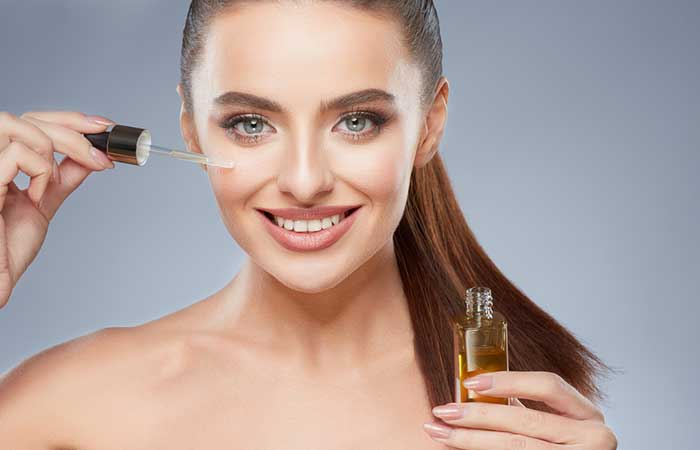The use of essential oils for skin care is something everyone should comprehend and for a good reason. These oils will come in handy when combating a host of skin health issues including acne, eczema, dry skin, stretch marks, cherry angiomas, skin irritation, and oily skin. They also improve skin tone and reduce the dreaded signs of aging such as wrinkles. Just like with any other medication, however, several measures are taken to ensure that people benefit optimally from their prospective essential oils while also preventing adverse effects like irritation and allergic reactions.
As a rule of thumb, people should never start using essential oils without first consulting with a health care provider. This is because many essential oils are potentially dangerous to infants or unborn babies. They can also cause harm to people with kidney, lung, heart or autoimmune conditions. Also, inappropriate use of essential oils might trigger severe allergic reactions.
It will also help a great deal if prospective essence users understand that various skin conditions are treated with different essential oils. Thus, they should seek professional guidance lest they aggravate their skin condition by using the wrong herb. There is a myriad of essential oils brands, which means that people should check expert opinion so that they may buy from the best producers. And it’s also recommended to test essential oils on a small patch of skin prior to using them on the desired body part.
Here are some best practices of using essential oils for skincare coupled with the recommended application methods.
Topical Application
This is among the most effective methods of using essential oils for skin care. The user is required to apply the essential oils directly to their skin. These oils are, however, highly concentrated, which is why it’s extremely important for users to dilute them before applying them topically. They can, for example, cause skin irritation or burns when used undiluted. When diluting essential oils, it’s advisable to use carrier oils.
There are different types of carrier oils with the most common ones including olive, coconut, jojoba, avocado, and almond. Users may also utilize their favorite moisturizers or lotions as carrier oils. It should, however, be noted that regardless of the carrier being used, the concentration of essential oils should range between 3-5%. This implies that three drops of essential oils should be diluted with at least one tablespoon of carrier oils. For massage purposes or application over larger areas of the body, one drop of essential oils should be diluted with one tablespoon of carrier oil. Some of the essential oils that are best applied topically include lavender, mandarin, frankincense, bergamot, and geranium.
Face Steaming
To create face steam, a person should first get a bowl that’s large enough to hold about 4 to 6 cups of hot water and a large towel. They should subsequently, add 2 to 3 drops of their favorite essential oils. This is followed by covering their head with a large towel and then lower their face to the bowl.
Facial steaming detoxifies the skin by loosening dirt and opening up the pores. It also improves perspiration, which helps to get rid of toxins thus preventing their buildup. Essential oils also contain antibacterial and antiseptic properties for combating acne. Such facials will come in handy when looking to hydrate the skin and promote enhanced blood circulation. Some essential oils like calendula and chamomile also boast incredible soothing and moisturizing effects that ultimately give the skin a unique glow. Likewise, fennel contains antioxidants that help to reduce the signs of aging.
Compressing
The compressing method is among the most comforting techniques of using essential oils for skin care. For this purpose, the user needs to pour 1 to 3 cups of hot, warm or cold water into a bowl and add a few drops of essential oils. Subsequently, they should swish around the water with a washcloth and wring it until water stops dripping. They should then place the washcloth on the affected part of the body. This method will come in handy when treating insect bites, sprains, and hot flashes. To ease inflammation, a patient can add eucalyptus, rosemary or marjoram into the water and use a cloth to rub on the affected area. Lavender is also an excellent essential oil for alleviating inflammation and insect bites.
Taking a Bath
The use of essential oils in bath water is a simple, yet the luxurious method of treating the skin. However, it would be unwise to add essential oils directly into the bath water. Oils and water don’t mix, which means that the essential oils won’t disperse effectively. Also, the oils will float on the water, exposing the skin to direct contact, which would, in turn, cause irritation. Instead, the oils should be mixed with a carrier oil or castile soap. Bathing with essential oils such as geranium helps to treat eczema, issues associated with premenstrual syndrome as well as itch and dry skin. Essential oils like chamomile, roses, and lavender are also effective in treating irritated skin.
Essential oils for skin care are applied using several techniques including massage, topical application, steaming and compressing. These oils are effectively used in treating skin conditions, promoting its health and masking the signs of aging. Essential oils can be applied to nearly all kinds of skins, which is why they are universally used for skincare. It should, however, be noted that essential oils need to be diluted before use.
Author: Guest Contributor
SHARE THIS STORY
